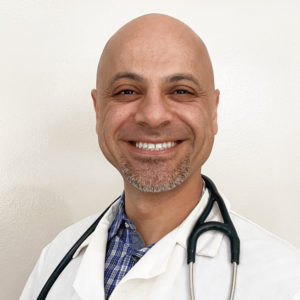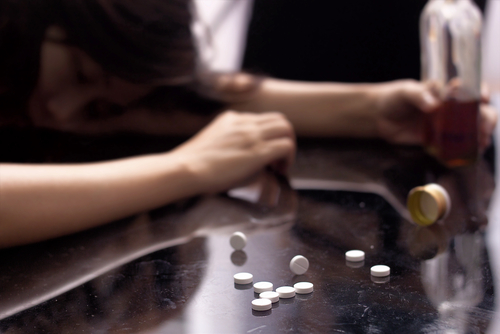The term “alcohol eyes” often emerges in discussions about the physical effects of alcohol abuse. This colloquial expression encompasses a variety of symptoms affecting the eyes that are commonly observed in individuals who consume alcohol excessively. These symptoms include redness, swelling, yellowing of the whites of the eyes, and even changes in vision. Research suggests that alcohol can cause significant changes in ocular health. Alcohol consumption can decrease visual performance, affecting how eyes react to contrasts and colors. Such changes can be particularly evident in the condition colloquially known as “alcohol eyes.”
At Pathways Recovery Center, we recognize that these symptoms are not just uncomfortable but can also be indicators of deeper, more serious health issues related to prolonged alcohol abuse. Our residential inpatient services are meticulously designed to not only treat these visible symptoms but also to address the comprehensive health concerns associated with alcohol addiction. By tackling both the symptoms and the root causes, we provide a holistic approach to recovery, aiming for long-term health and sobriety for our clients.
Understanding Alcohol Eyes: Symptoms and Causes
“Alcohol eyes” is a colloquial term that refers to a range of eye-related issues stemming from prolonged alcohol use. These symptoms are not just indicators of recent drinking but can also signal deeper, more chronic alcohol-related health problems. Here are some common manifestations of “alcohol eyes”:
- Redness: Alcohol causes the blood vessels in the eyes to dilate, leading to noticeable redness.
- Puffiness: Fluid retention around the eyes, often evident as puffiness, is a common symptom.
- Yellowing: A severe symptom known as jaundice, which results from liver damage due to excessive alcohol intake, causes the whites of the eyes to turn yellow.
- Blurry Vision: Alcohol can impact the optic nerves, leading to changes in visual perception and resulting in blurred vision.
These symptoms are not only signs of recent alcohol consumption but may also indicate more chronic alcohol-related health issues. For instance, a study on Korean men with obesity found that those with an alcohol flush reaction had a significantly higher risk of elevated intraocular pressure (IOP) with less alcohol consumption compared to those without the flush response. Specifically, individuals consuming between 8 to 16 standard drinks per week were found to have a 4.49 to 8.14 times higher risk of high IOP compared to non-drinkers.
At Pathways Recovery Center, we use these symptoms as starting points to delve deeper into a person’s health status and history of substance use. By understanding the wide-ranging effects of alcohol on the body, including eye health, we tailor our treatment approaches to ensure a comprehensive recovery process. Many individuals also question whether alcoholism is hereditary, especially if they have seen patterns of alcohol use disorder within their family. While genetics can influence the risk of developing alcoholism, it is not the sole determining factor—environmental and behavioral aspects also play a significant role.
The Impact of Alcohol on Eye Health
The impact of alcohol on eye health can be profound and long-lasting. Beyond temporary symptoms like redness and puffiness, chronic alcohol abuse can lead to severe and irreversible visual impairments. These complications may include:
- Optic Neuropathy: Chronic alcohol consumption can cause optic neuropathy, a serious condition that damages the optic nerves. This damage can lead to symptoms such as pain, partial or total vision loss, and other visual disturbances.
- Muscle Weakness: Alcohol directly affects muscle control, and the muscles around the eyes are no exception. Excessive drinking can weaken these muscles, resulting in difficulty controlling eye movements, which can cause double vision or rapid eye movements that cannot be controlled voluntarily.
- Increased Risk of Cataracts: While the evidence linking moderate alcohol consumption to major eye diseases like cataracts and glaucoma is inconsistent, heavy drinking is associated with a greater risk. For instance, a study found that individuals consuming more than seven drinks per week were more likely to require cataract surgery compared to those who drank less. This suggests a correlation between heavy alcohol use and an increased risk of developing cataracts, potentially leading to clouded lenses and impaired vision if not addressed.
At Pathways Recovery Center, our healthcare professionals are experienced in diagnosing and addressing these serious health issues. We offer medical and therapeutic solutions tailored to each individual’s needs, focusing on treating the immediate symptoms and preventing long-term damage to ensure a holistic recovery and improved overall well-being. This comprehensive approach helps our clients regain not just their eye health but also enhances their quality of life after quitting alcohol cold turkey and overcoming alcohol dependency.
Detoxification and Its Role in Treating Alcohol Eyes
Detoxification is the first step in addressing alcohol addiction and its physical symptoms, including alcohol eyes. Our detox program is designed to safely manage the withdrawal symptoms associated with stopping alcohol use. This process is critical as it cleanses the body of toxins and stabilizes the individual for further treatment. During detox, medical staff closely monitor patients to ensure their safety and comfort. Medications may be administered to ease symptoms, reduce cravings, and prevent complications. Our residential setting provides a supportive environment where patients can focus entirely on their recovery without the distractions or triggers of everyday life.
Comprehensive Residential Treatment for Alcohol Addiction
Following detox, our residential treatment program offers a structured environment where individuals can continue their recovery journey. Our program includes:
- Individual Therapy: One-on-one sessions with a therapist help to address the underlying psychological aspects of addiction.
- Group Therapy: Group sessions provide peer support and the opportunity to learn from the experiences of others.
- Educational Workshops: These sessions focus on teaching healthy coping mechanisms and understanding the effects of alcohol on the body.
- Holistic Therapies: Activities such as yoga, meditation, and art therapy are incorporated to support overall healing and wellness.
Our approach is holistic, addressing not only the physical symptoms of alcohol addiction like alcohol eyes but also the psychological, social, and behavioral aspects.
Managing Alcohol Cravings During Recovery
One of the key challenges in the recovery from alcohol addiction is managing cravings. Many clients wonder, “how long do alcohol cravings last?” The duration and intensity of alcohol cravings can vary depending on the length and severity of the addiction, as well as individual physiological differences. At Pathways Recovery Center, we address these cravings through a combination of medical intervention, psychological support, and lifestyle modifications.
During residential treatment, clients receive ongoing education about the nature of alcohol cravings and are equipped with effective strategies to manage them. Techniques might include cognitive-behavioral therapy, mindfulness practices, and physical activities that help reduce the urge to drink. By understanding and addressing these cravings directly, we empower our clients to maintain their sobriety and mitigate the risk of relapse.
Alcoholism Addiction Treatment at Pathways Recovery Center
Alcohol eyes are more than just a visible sign of alcohol consumption; they can be a window into the broader impacts of alcohol on an individual’s health. If you’re wondering how to deal with an alcoholic spouse, recognizing physical symptoms like alcohol eyes can be an important first step. At Pathways Recovery Center, we are dedicated to helping individuals understand and overcome the physical and psychological effects of alcohol addiction. Our comprehensive, compassionate care aims to restore eye health and overall physical and mental well-being. If you or someone you know is struggling with alcohol addiction and experiencing symptoms like alcohol eyes, we are here to help. Please contact us to learn more about our programs and how we can support you on your journey to recovery.






